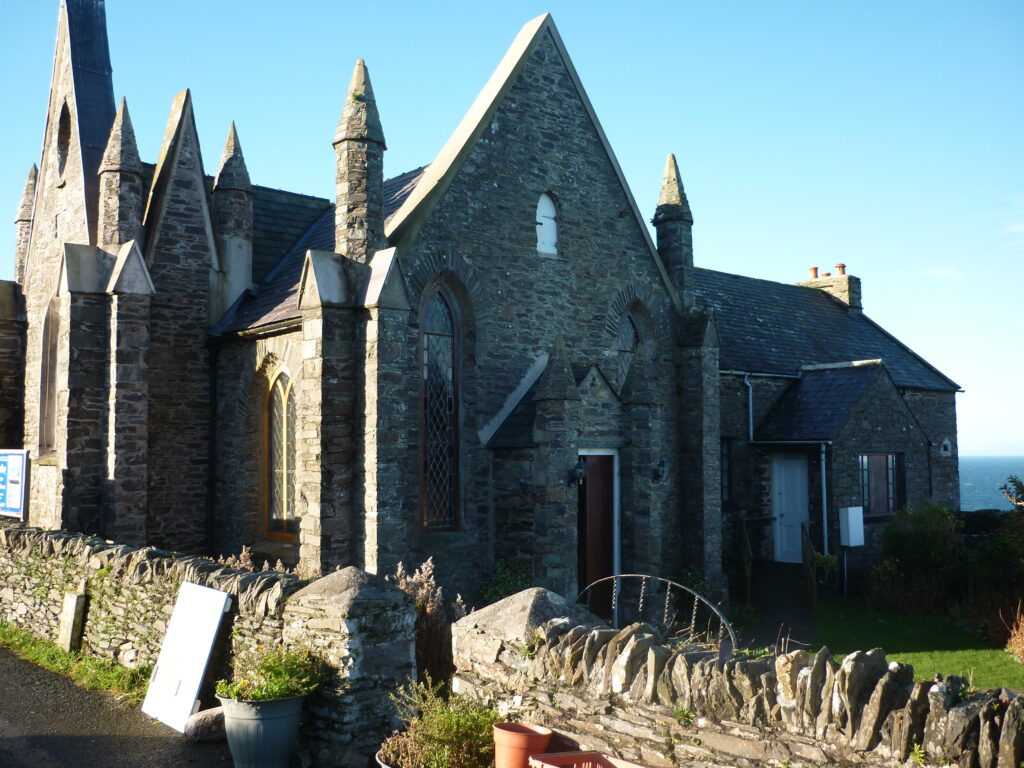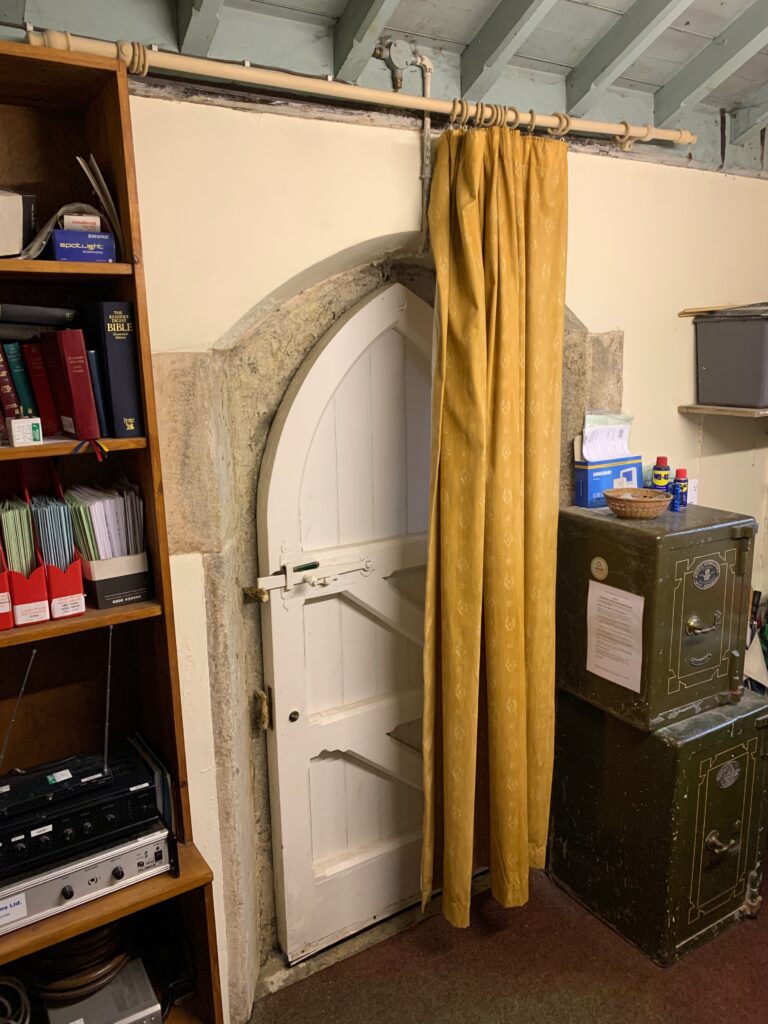
Building maintenance is the daily burden of every churchwarden, who needs no lectures about its importance. But from the point of view of moving towards net zero carbon, certain aspects take on more urgency. These are typically the avoidance of damp and draughts. One challenge in many churches is the lack of adequate controllable ventilation, which is so important in tackling damp. Another is trying to achieve a welcoming outlook (open outer door) but without draughts.

Minor alterations such as draught excluders like the curtain in this photo of St John’s, wall hangings (with an air gap, acting as a cold barrier), insulation and draught proofing of the tower can make a significant difference.
The first key task after building maintenance is to agree a Heating Resilence Plan. This means having an answer to the question, “What will we do if the boiler breaks down irreparably.” Many church boilers are used so little that they last well beyond their expected lifetime. But from the point of view of the climate emergency, a heating plan without future fossil fuel use is the gold standard.
There is the possibility of setting up a ‘boiler bank’, offering second hand boilers taken out of churches or halls for use in an emergency elsewhere. This would buy time for a church community to action their Heating Resilience Plan.
But for many small and even medium sized churches that are normally used only weekly, the cost of replacing oil and gas boilers with electric alternatives can be daunting. Yet there are options. These webinars on the Church of England website may help you think through your particular options.
For these churches, ‘easy win‘ type actions are recommended in the short term. Offsetting may be an option in the medium term (2030).
For busy and for big church buildings, which have a larger carbon footprint, the first consideration might be to add electric heating equipment that ‘heats the people not the building’. Examples of these are heated pew or chair cushions. The cost ranges from very modest in the case of the type of cushion trialled at Marown St Runius (around £20 each with battery) to more like £200 for the Sit & Heat product.
More major re-ordering offers other opportunities, for example to build a vestibule with an inner door to reduce draughts; insulate the roof* if doing roof repairs (*appropriate in some churches); enclose a smaller area within the church for small groups to use (reducing fuel use and heating bills).
Traditional heating systems, using a boiler and radiators filled with water scattered about don’t heat large spaces very well and certainly don’t keep congregations comfortable unless adjacent to a radiator or pipe. They also cost a lot to run and burn a lot of fossil fuel.
But for larger, busy churches underfloor heating both offers an alternative that provides heat at ground level where the people are and can be operated with heat pumps. The reason ‘busy’ is emphasised is that heat pumps work best when run for long periods. And the reason larger churches are selected is because they can afford the high costs involved in the necessary work.
In addition to promoting biodiversity, church grounds may also offer the opportunity to address the carbon footprint. Some churches have considered installing EV chargers in their car parks and ground mounted solar photovoltaic panels could theoretically be an option where there is appropriate space.